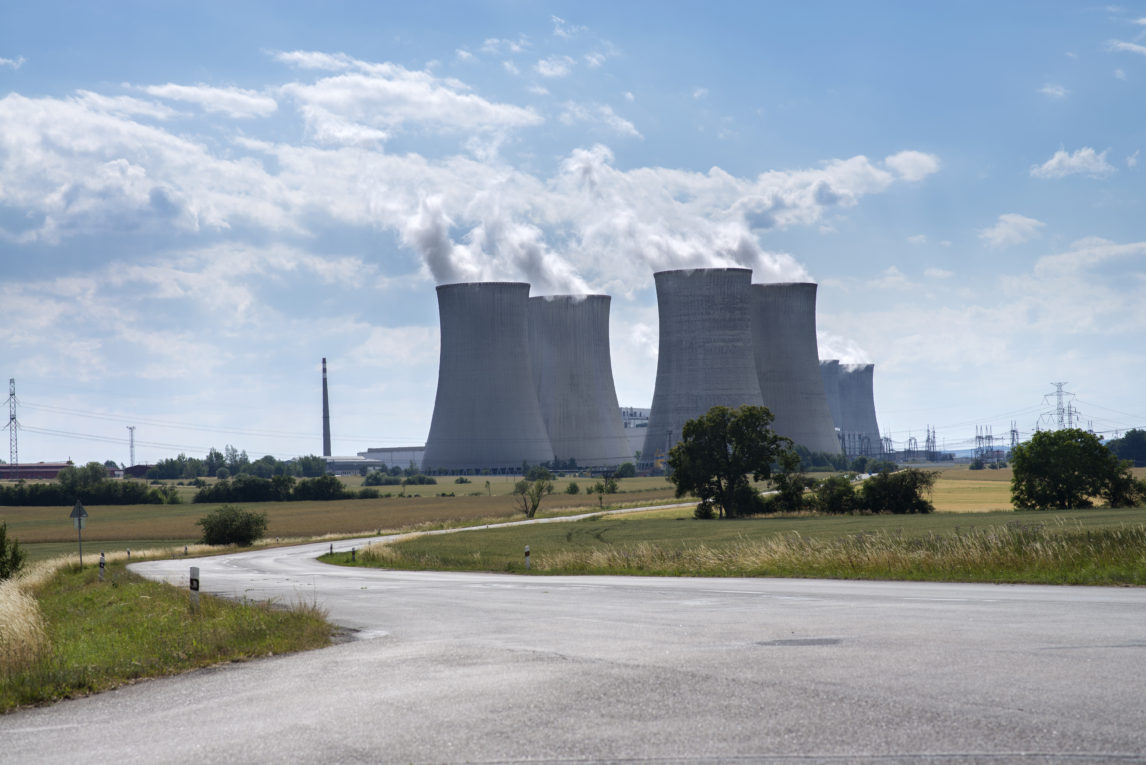FOR IMMEDIATE RELEASE
March 12, 2012
Contact Jessica Azulay, AGREE, (315) 480-1515
Barbara Warren, Citizens’ Environmental Coalition, (845) 648-8802
Paul Gunter, Beyond Nuclear, (301) 523-0201
A year after the Fukushima Daiichi nuclear disaster, a statewide alliance is calling on the Nuclear Regulatory Commission (NRC) to suspend operations at the James A. FitzPatrick nuclear reactor near Oswego, New York. NRC documents obtained by the groups show that FitzPatrick’s design poses an especially grave threat to public safety in the event of an accident at the plant.
The New York-based Alliance for a Green Economy (AGREE) has filed a petition with the NRC asking for an emergency enforcement action against the FitzPatrick plant. AGREE is joined in the petition by Beyond Nuclear, a Washington DC-based nuclear watchdog organization. The petition asks for the immediate suspension of the plant’s operating license, public hearings on the safety of the plant, and the public release of a post-Fukushima safety reassessment.
The petition and related documents are available AGREE’s website: www.agreenewyork.org.
“We are calling on the Nuclear Regulatory Commission to put public safety over short-term nuclear industry profit,” said Judy Lieblein, a resident of Syracuse, which is located 36 miles from Syracuse. “If we have learned anything from the Fukushima nuclear disaster, it is that it’s better to be safe than sorry.”
The FitzPatrick reactor is one of 23 Fukushima-style Mark I Boiling Water Reactors operating in the United States and one of two in Central New York. In 1989, the NRC asked Mark I operators to install an experimental remedy to known design flaws: a Direct Torus Vent System designed to relieve pressure during a nuclear accident. NRC documents reviewed by Beyond Nuclear and AGREE show that FitzPatrick is the only Mark I plant operating in the U.S. that does not have such a vent. Instead, in 1992, the New York Power Authority, which was FitzPatrick’s operator at the time, convinced the NRC that a pre-existing venting path was sufficient.
As described in a 1992 document from the NRC, the FitzPatrick venting strategy is to allow the venting of radiation and explosive hydrogen gas through the existing ductwork, portions of which are not designed to withstand the high pressures expected during a nuclear accident. The document describes how the radiation and gasses would be vented into a building adjacent to the main reactor building and how rising pressure would blow off the double doors that open to the outside, releasing the radiation at the ground level.
The plan, accepted by the NRC, saved the operator $680,000.
Paul Gunter, Director of the Reactor Oversight Project of Beyond Nuclear, Takoma Park, Maryland, pointed out that even after the assumptions underlying the FitzPatrick venting strategy were proved wrong by the Fukushima accident, the plant’s current owner, Entergy Corporation, has made no changes to address the known containment flaws in at the reactor.
“To save $680,000, FitzPatrick’s operators refused to install the same modifications that every other Mark I operator made on these vulnerable containments,” Gunter said. “When you mix money and risk that’s called ‘gambling’ and that is precisely what Entergy is doing today with the lives and livelihoods of New York citizens.”
The group’s petition to the NRC does not ask the Commission to require FitzPatrick to install a vent like the other Mark I’s in the US, since that Direct Torus Vent System was shown to fail during the nuclear accident at Fukushima. (Beyond Nuclear, along with 8,000 co-petitioners have challenged the Direct Torus Vent System with a separate petition to the NRC, filed last April.)
Fukushima vividly demonstrated that the containment structure of older Mark 1 plant designs cannot handle the high pressures that occur in the event of a severe nuclear incident. Venting radiation to the public is not desirable, but to avert a worse disaster the NRC asked for hardened vents that release radiation from 300 foot stacks.
“In contrast, the Fitzpatrick plant cannot contain highly radioactive emissions in such an event, and the emergency plan currently assumes an explosion would distribute radiation at ground level to nearby communities instead of via a 300 foot stack,” said Barbara Warren, Executive Director of the statewide Citizens’ Environmental Coalition. “The plant is not currently safe to operate and this is why we are calling for suspension of operations until safety can be assured.”
Alliance for a Green Economy (AGREE) works for safe, affordable energy and the development of a green economy in New York State. Our goal is a prosperous, safe, and healthy New York, fulfilling the promise of conservation, energy efficiency, and safe, clean renewable energy sources to end our state’s reliance on wasteful and environmentally destructive forms of energy. The Alliance works to promote this transition to a carbon-free and nuclear-free future and educates the public about alternatives that can revitalize the economy and safeguard human health and the environment. Organizational members of AGREE include the Center for Health, Environment & Justice, the Citizens’ Environmental Coalition, Peace Action New York State, Peace Action CNY, the CNY chapter of Citizens Awareness Network, and the Syracuse Peace Council.
Beyond Nuclear aims to educate and activate the public about the connections between nuclear power and nuclear weapons and the need to abandon both to safeguard our future. Beyond Nuclear advocates for an energy future that is sustainable, benign and democratic. The Beyond Nuclear team works with diverse partners and allies to provide the public, government officials, and the media with the critical information necessary to move humanity toward a world beyond nuclear.

